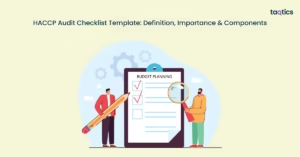Retail Store Attendance Management: Overview, Challenges, How to Guide, Software Needed

Retail attendance management involves systematically tracking employee presence, working hours, leaves, and shift schedules to optimize productivity and control labor costs. With retail attendance management, managing workforce attendance is critical to ensuring smooth daily operations in a country like India, where the retail sector is rapidly growing, being valued at over $1.1 trillion and employing more than 50 million people.
Inaccurate or inconsistent tracking can lead to payroll errors, staff shortages, and compliance risks, ultimately impacting customer satisfaction and store performance. With multiple shifts, fluctuating footfall, and a high percentage of part-time or seasonal staff, having a robust attendance management strategy is no longer optional, but a necessity. However, retailers face a host of challenges, from frequent staff turnover and unplanned absences to outdated manual tracking and scheduling conflicts. These hurdles can disrupt business flow, especially during peak sales periods or promotional events.
To counter these issues, retailers are turning to tech-enabled solutions that automate timekeeping, simplify shift scheduling, and provide real-time visibility into attendance data. Modern software like Taqtics offers location-based check-ins, leave management, and payroll-ready reports, making it easier to manage dispersed teams.
What is Attendance Management in Retail?
Attendance management in retail refers to the system or process used to track and manage employees’ working hours, shifts, absences, and overall presence at work. Attendance management in retail ensures that the right number of staff are available at the right time, which is crucial for smooth store operations, customer service, and labor cost control.
Retail businesses often operate with varied shifts, part-time employees, and peak hours, making attendance tracking essential. This system helps prevent understaffing during busy times or overstaffing during slow periods. For example, a clothing store in a mall may use attendance management software to schedule weekend shifts for part-time workers based on foot traffic data. If an employee frequently arrives late or misses shifts, the system flags it for HR to take action.
Modern systems can include features like biometric logins, mobile check-ins, and real-time dashboards. These tools streamline payroll processing, ensure compliance with labor laws, and improve accountability. Attendance management helps retail businesses optimize staff scheduling, reduce operational costs, and enhance employee productivity.
What are The Common Attendance Challenges in Retail?
The common attendance challenges in retail impact operations, customer service, and profitability.
High Employee Turnover
Retail jobs typically have high turnover due to part-time roles, seasonal work, and limited career growth. Constant hiring and training of new staff make it difficult to maintain a stable schedule. Frequent exits can disrupt team dynamics and increase the workload on remaining employees, leading to burnout and even more absences.
Unplanned Absences and Tardiness
Last-minute call-outs and lateness are common in retail, often due to the young or part-time workforce balancing school or other jobs. These unplanned gaps in coverage can leave stores short-staffed during peak hours, affecting customer service and sales. Replacing absent employees on short notice is both challenging and costly.
Inaccurate Manual Tracking Methods
Many smaller retailers still rely on manual timesheets or punch cards, which are prone to errors, buddy punching, and manipulation. These outdated methods can lead to payroll inaccuracies and disputes, while also increasing administrative burden and reducing transparency. This is where the workforce time and attendance tracking innovations help.
Scheduling Conflicts and Understaffing
Retail managers must juggle complex shift patterns and employee availability. Miscommunication or poor scheduling tools often lead to conflicts or overlapping shifts. Understaffing, especially during holidays or sales events, affects customer experience and employee morale, as team members may feel overworked. Hence, employee scheduling must be properly done.
To address these issues, many retailers are adopting automated attendance systems that integrate scheduling, real-time tracking, and reporting to improve accuracy and efficiency.
How Do You Manage Team Attendance in Retail?
There are seven ways to manage team attendance in retail and ensure smooth operations, optimal staffing, and satisfied employees.
- Implement a Reliable Attendance System: Start by choosing a modern attendance tracking solution, such as biometric scanners, mobile apps, or POS-integrated systems, that fits your store size and needs. Automation reduces errors and simplifies record-keeping.
- Create Clear Attendance Policies: Establish and communicate clear policies on shift timings, breaks, tardiness, absences, and consequences of non-compliance. Ensure all staff members understand these guidelines during onboarding and training.
- Build and Share Smart Schedules: Use scheduling tools that allow visibility into staff availability, preferred shifts, and peak business hours. Publish schedules in advance to avoid conflicts and allow employees time to plan.
- Monitor Attendance Regularly: Track attendance in real time and review daily reports. Identify patterns of lateness or absenteeism early so corrective steps can be taken before they impact store performance.
- Address Issues Promptly and Fairly: When attendance issues arise, address them through one-on-one discussions. Be consistent but flexible—understand the reason behind the issue and work toward solutions, such as shift swaps or adjusted hours.
- Reward Punctuality and Reliability: Recognize and reward employees who consistently show up on time. Incentives like bonuses, shift preferences, or public recognition can motivate better attendance across the team.
- Review and Adjust: Regularly evaluate your system and policies. Gather feedback from staff and adapt your approach to better suit store demands and employee needs.
Through these efficient employee attendance tracking techniques, retail managers can maintain a dependable, efficient workforce and reduce the stress of last-minute staffing gaps.
What are The Features of an Effective Attendance Management System
The features of an effective attendance management system help streamline workforce management, enhance accuracy, and improve employee accountability.

Real-time Clock-In/Out Tracking
This feature allows employees to punch in and out in real-time using biometric scanners, mobile apps, or POS systems. It ensures accurate recording of working hours and reduces time theft or buddy punching. Managers can instantly view who’s present, late, or absent, enabling quick adjustments when needed.
Integration with Scheduling and Payroll Systems
A good attendance system should seamlessly integrate with employee scheduling tools and payroll software. Scheduling software for streamlining employee rosters in retail eliminates the need for manual data entry, reduces errors, and ensures employees are paid accurately for the hours they’ve worked. Integration also simplifies compliance with labor laws, overtime calculations, and holiday pay.
Leave and Shift Request Management
Efficient systems include built-in tools for managing leave applications and shift swaps. Employees can request time off, swing shifts, or suggest changes to their shifts directly through the platform. Managers can approve or deny requests with a click, maintaining transparency while reducing administrative workload.
Alerts for Late or Missed Shifts
Automated alerts notify managers and employees when someone is late, absent, or has missed a shift. This proactive feature helps managers react quickly, reassign shifts or call in backup staff, to avoid understaffing during critical hours.
Geo-Fencing for Location-Based Tracking
Geo-fencing ensures that employees can only clock in when they are physically at the store or designated worksite. It’s especially useful for retail chains with multiple locations or mobile staff. This feature adds a layer of verification and prevents false time entries from outside the work zone.
A well-equipped attendance management system minimizes manual work, improves staff punctuality, and enhances the overall workforce management process, leading to better service and operational success.
Which Software is Best for Attendance Management in Retail?
Taqtics is the best software for attendance management in retail, which comes with multiple features tailored for retail environments, particularly beneficial for businesses with multiple outlets and dispersed teams.

- GPS-Based Check-In/Out: Employees can log their attendance via a mobile app, ensuring check-ins and check-outs occur only within the designated store premises. This feature includes a mandatory selfie upload to prevent proxy attendance entries, enhancing accountability and accuracy.
- Leave Application & Approval: Taqtics streamlines the leave management process by allowing employees to submit leave requests for various types (casual, sick, privileged) directly through the system. Managers can easily approve or deny these requests, facilitating better workforce planning and reducing discrepancies.
- Real-Time Attendance Reports: The system provides real-time attendance logs accessible to both employees and managers. This transparency helps in monitoring attendance patterns and ensures timely payroll processing.
- Payroll-Ready Reports: Taqtics generates downloadable attendance reports compatible with payroll systems, simplifying the reconciliation process and ensuring employees are compensated accurately for their working hours.
- No Hardware Required: Being a scalable, mobile-based solution, Taqtics eliminates the need for additional hardware, making it a cost-effective choice for retailers looking to modernize their attendance tracking without significant upfront investment.
Taqtics, as an attendance management software, provides a user-friendly, efficient, and scalable solution that addresses the unique challenges faced by retail businesses, ensuring accurate tracking and streamlined operations.
What are The Legal & Compliance Considerations?
The legal and compliance considerations ensure managing compliance with labor laws in employee scheduling and protecting employee rights.
Labor Laws and Regulations
India’s labor laws, such as the Shops and Establishments Act (state-specific), the Factories Act, and the Code on Wages, set rules on working hours, rest intervals, weekly offs, and overtime. Retailers must ensure that attendance systems help enforce these provisions, such as not exceeding 48 work hours a week or 9 hours a day without proper overtime pay.
Maintaining Accurate Attendance Records
Under Indian labor laws, especially for establishments registered under the Shops and Establishments Act, employers are required to maintain attendance and wage records. These records must be readily available for inspection by labor officers and are essential during audits or legal disputes. Digital systems must be reliable and tamper-proof to ensure legal validity when it comes to using any workforce time and attendance tracking innovations.
Privacy Concerns and Data Security
With biometric or GPS-based attendance systems, collecting and storing employee data raises privacy concerns. In line with India’s evolving data protection framework (e.g., the Digital Personal Data Protection Act, 2023), employers must ensure that personal data is securely stored, access is restricted, and data is used only for legitimate purposes with employee consent.
Fair Scheduling Laws in Various Regions
While India doesn’t yet have nationwide “fair workweek” laws like some Western countries, certain states and union territories have implemented specific scheduling norms, especially during festivals or election periods. Retailers must know the importance of scheduling in retail management and stay updated on regional rules regarding shift timings, weekly offs, and compensatory leave to ensure compliance.
By aligning attendance management with legal requirements, retailers can avoid penalties, protect employee rights, and foster a transparent and compliant workplace.



